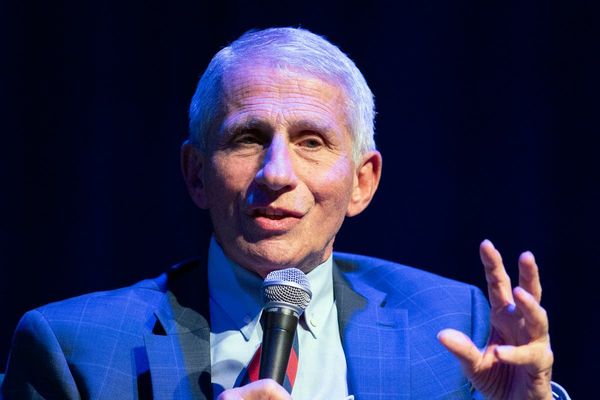College sports leaders have spent more than a year reviewing the calendar, and where everything fits in it, to best accommodate the oft-conflicting pursuits of athletic excellence, academic credibility, athlete well-being and piles of cash. It’s a well-meaning endeavor, but it’s missing one obvious fix: Get rid of the December football signing period.
It is horribly positioned amid a glut of other football-related happenings. Hirings, firings, bowl games, the College Football Playoff and the opening of the transfer portal all are blockbuster December events—oh, and all those holidays. Why add another log to the inferno? Coach, administrator and, yes, media bandwidth is close to maxed out, and the easiest way to alleviate that is to move the most movable element.
As we have discussed on the College Football Enquirer podcast, there is nothing sacred about the five-year-old December signing period. Even the more traditional February date could and should be flexed. Give everyone some time to breathe, and this process could all be much better.
The December period was introduced because coaches and athletes wanted to end the recruiting process earlier and get letters signed. For coaches and schools, it was a way to lock in players who had already committed and spend less time babysitting. For recruits, it was a way to stop the phone calls, texts and emails. But as is almost always the case in college sports, the unintended consequences piled up quickly.
Removing the December period would help alleviate some of the corrosive effect of the coaching carousel on both the regular season and bowl season. Everyone is in a rush to change jobs because of a signing day that doesn’t need to be there. Move it back—way back, like spring—and maybe some coaches aren’t fired in September; maybe some teams don’t flop in November because their coaches have mentally checked out; maybe some coaches stick around to finish the job through a bowl game.
In a vacuum, it would be great to see colleges adopt something like the NFL rules that largely forestall the coaching carousel until after the season. In reality, that would be hard to do, given potential legal challenges and the fact that the various conferences already have a hard enough time working together. So if that’s a non-starter, removing one of the biggest motivators for changing jobs in November may help calm the December waters and restore some credibility to bowl games.
Think Cincinnati might have had its act together a bit more for the Fenway Bowl if Luke Fickell were there instead of trying to recruit on the fly at Wisconsin? How about Liberty and Hugh Freeze in the Boca Raton Bowl? If schools and bowls expect fans to travel to those games, it’s worth expecting the teams to treat them as something more than an interim-addled, fire-drill farce.
Perhaps the carousel continues its early spin, now that it has begun the norm. “We may have let the toothpaste out of the tube and it won’t go back,” Southeastern Conference commissioner Greg Sankey told Sports Illustrated last year. But there are other reasons moving it out of December makes sense.
The playoff is expanding to 12 teams in 2024. That will consume more of the December calendar, as more important postseason games are created. And it means more programs will be involved in the pursuit of a national championship, giving them less time to devote to signing players during the playoff. Could you imagine if college basketball had a signing period during the NCAA tournament Sweet 16? Nobody would sign off on something that ludicrous.
The December signing period also increases the likelihood that a coach of a playoff program will bail on his team before it plays one of the most important games in school history. If there were a 12-team playoff this season and an SEC program had gone hard after, say, Willie Fritz of No. 12 seed Tulane, would he stick with the Green Wave through the playoff or feel compelled to build a December signing class for his new school?
And there is this aspect: Who is actually paying attention? Signing day is a big moment for many teenagers, but the December signees are increasingly lost in the churn of other news.
Players making news in the transfer portal right now are more established as prospects, better known to fans and more likely to immediately matter. As big as it is for Arch Manning to sign with Texas on Wednesday, Kentucky’s landing North Carolina State transfer quarterback Devin Leary might be more impactful in 2023. Having already thrown for more than 6,800 college yards and 62 touchdowns, Leary will be atop the Wildcats’ depth chart from the moment he arrives on campus.
From a media coverage standpoint, there simply isn’t as much time to devote to signing day in December as there is in February (or, my ideal signing window, April). You’re a recruit and you’ve got a fun announcement planned, with hats on a table or other props? That’s nice. Wish we could give it more attention. But we are (halfway) here today and gone before sundown, back to covering everything else going on in the sport.
The NFL has mastered the art of spreading out its various news events throughout the year, with free agency and the draft and schedule releases sprinkled through the spring. College football could use a few pointers in that area.
One suggested alternative is not a good one—do not move up the early signing period. Having it in the summer—say, July, between a prospect’s junior and senior years of high school—increases the chances of uninformed decisions by athletes who might not have any idea what they’re getting themselves into.
In terms of maturity, there often is a big difference between ages 16 and 17, and then again between 17 and 18. A 16-year-old knows less what college is even about, academically and athletically and socially, than a 17-year-old. The younger the athlete is when thrust into the whirl of campus visits and home visits and scholarship offers, the less likely they are to even know what questions to ask. College athletes who have hosted 16-year-olds on official visits will often note how unprepared the recruits were for the experience.
July is no time for a signing period. Neither is December, when it’s like trying to cram a carnival inside a concert inside a festival around several national holidays. It no longer fits in the current football calendar.







